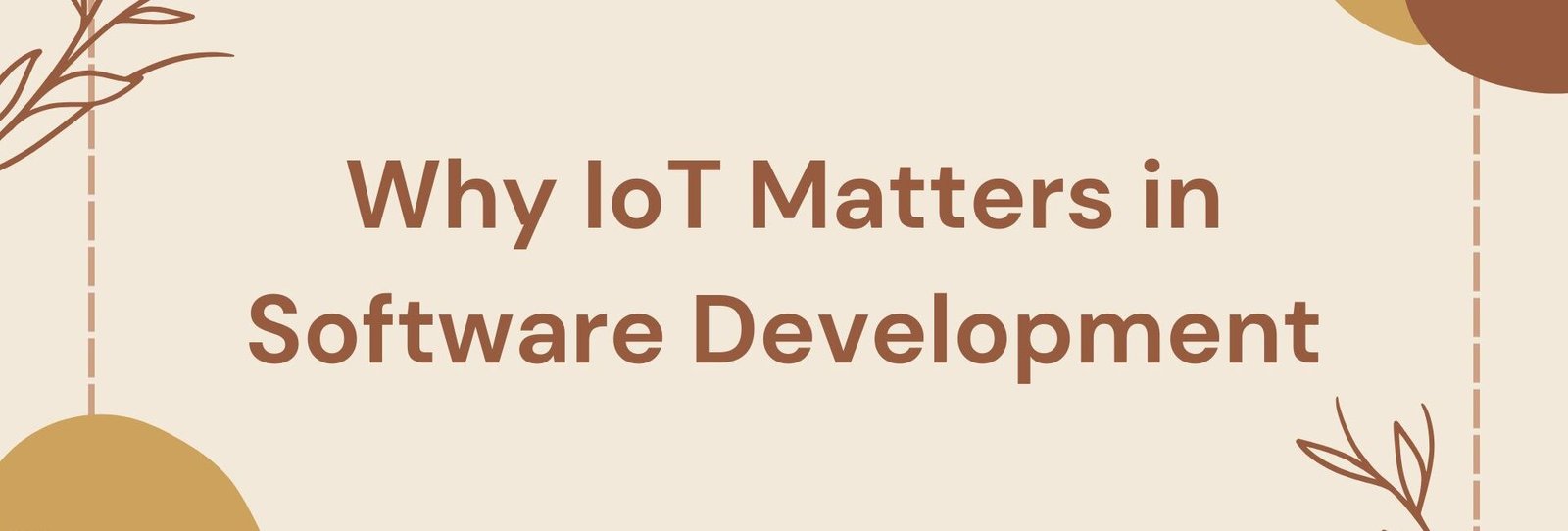
The Internet of Things (IoT) has rapidly evolved from a buzzword into a foundational component of today’s digital transformation. From homes to hospitals, warehouses to cities, connected devices are now embedded into everyday life. As this network of smart sensors and machines expands, the role of software development is being reshaped to support seamless communication, real-time decision-making, and massive data flow. For businesses aiming to stay competitive and future-ready, understanding how IoT affects software development is no longer optional—it’s essential.
How IoT Has Redefined Software Requirements
The rise of IoT has significantly changed what is expected from modern software. No longer are applications built to operate in isolation. Instead, systems are now designed to interact with real-world devices that collect and transmit data continuously.
Traditional software relied heavily on static inputs, manual updates, and limited data processing. In contrast, IoT-driven systems require developers to consider live connectivity, sensor feedback, machine interaction, and decentralized environments. This shift has transformed both the structure and function of software applications.
Benefits of Integrating IoT into Software Development
1. Operational Efficiency Through Automation
IoT allows software to trigger automated actions based on real-time inputs. This leads to reduced manual work, fewer errors, and more consistent outcomes—particularly in manufacturing, logistics, and energy sectors.
2. Real-Time Data for Faster Decisions
With live insights coming directly from devices, decision-making is greatly improved. Businesses are empowered to detect issues early, optimize resources, and adapt instantly to changing conditions.
3. Enhanced User Experience
IoT-enabled applications personalize interactions based on user behavior, environmental factors, or device usage. This responsiveness enhances customer satisfaction and engagement across industries.
4. Competitive Business Advantage
By embracing IoT-powered software, companies gain a technological edge, improve product offerings, and open doors to new services like predictive maintenance or remote monitoring.
Key IoT-Driven Changes in the Development Lifecycle
The software development process has been significantly impacted by IoT in several ways:
-
Architecture Must Be Modular and Scalable: Applications must be built with flexibility in mind, ready to accommodate thousands or even millions of devices.
-
Microservices and APIs Are Essential: Instead of monolithic systems, developers rely on smaller components and standardized APIs to ensure devices communicate effectively.
-
Data Storage and Management Must Evolve: Massive volumes of sensor data require advanced data lakes, real-time analytics engines, and efficient pipelines.
-
Security and Compliance Require Ongoing Focus: With more endpoints, vulnerabilities increase. Developers must now embed robust security features at every layer of the application.
Business Use Cases Driving IoT-Enabled Development
The impact of IoT software development is being seen across a wide range of industries:
-
Smart Homes: Lighting, temperature, and appliances are being controlled via mobile apps, enhancing convenience and energy savings.
-
Healthcare: Remote patient monitoring through wearable devices allows data to be collected and shared with medical professionals in real time.
-
Manufacturing (IIoT): Machines equipped with sensors report performance data, enabling predictive maintenance and minimizing downtime.
-
Urban Infrastructure: Smart traffic lights, public safety systems, and energy grids rely on connected software to operate efficiently.
-
Logistics and Fleet Management: GPS tracking, fuel monitoring, and route optimization are made possible by IoT platforms integrated with custom software.
Challenges and Considerations
Despite its benefits, IoT integration introduces a few complex challenges for software development teams:
-
Handling Large-Scale Data: The constant flow of data requires scalable storage, processing, and analytics tools.
-
Ensuring Compatibility Across Devices: Not all devices speak the same language. Standards and interoperability must be considered early in development.
-
Security Vulnerabilities: More connection points mean more potential threats. Cybersecurity must be deeply integrated.
-
Power and Bandwidth Constraints: Developers must consider how resource-limited devices (like sensors) will communicate efficiently without draining power or bandwidth.
The Future of Software Development with IoT
As the IoT ecosystem continues to grow, the future of software development will become even more decentralized, intelligent, and responsive. Artificial intelligence is already being used to make IoT applications smarter—helping businesses predict outcomes and make autonomous decisions. Edge computing is also gaining traction, allowing data to be processed closer to the source rather than in centralized servers.
To stay ahead, businesses will need development teams that understand the unique demands of IoT architecture, data pipelines, and device management. Agile methodologies, real-time monitoring, and rapid scalability will define the new normal for software projects.
Conclusion
IoT is more than a technology trend—it’s a transformative force that is reshaping the way software is conceived, developed, and deployed. By enabling smarter operations, real-time insights, and cross-device communication, IoT is turning software into a central nervous system for modern enterprises. As this evolution continues, businesses seeking reliable, tailored, and future-proof solutions are increasingly turning to a custom software development company in Canada—where innovation, quality, and market insight are being blended to deliver powerful results.


